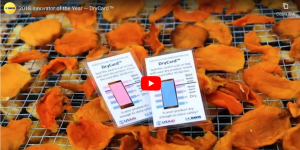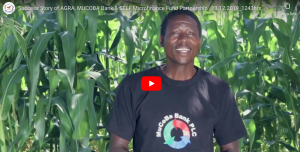Three innovative farming solutions made possible through South-South and Triangular Cooperation
Today’s global challenges—like climate change, conflict and COVID-19—require a global response. South-South and Triangular Cooperation (SSTC) is a crucial element of this, adding perspectives from the Global South to development approaches and promoting solutions that address the specific needs of developing countries.
IFAD has long been an advocate of SSTC, drawing on its expertise and its network of partners to mobilize solutions that broaden our impact on the ground and build synergies to scale-up results that benefit the poorest rural people.
In partnership with the Alliance for a Green Revolution in Africa (AGRA), IFAD’s Rural Solutions Portal documents and promotes rural innovations across Africa and Asia. Since 2018, more than 40 rural successes have been featured—covering challenges such as climate change, rural finance and food insecurity—while increasing the visibility of SSTC.
Here are three agri-food innovations featured in the portal that show the potential of SSTC.
Hello Tractor
In sub-Saharan Africa, high costs limit the use of machinery by smallholder farmers. In Nigeria, there are only 50,000 tractors to support millions of smallholder farmers. This mismatch between supply and demand of tractor services increases transaction costs and the time and distance involved in connecting smallholder farmers to tractor services.
Developed in Kenya, Hello Tractor is an app that connects tractor owners and smallholder farmers. Since 2017, over 250,000 smallholders across Africa have benefited from the service.
DryCard
Many food producers in Africa preserve food by drying it in the sun. However, gauging when products are dry enough is a challenge, sometimes resulting in contaminated products which add to already high post-harvest losses. Using an indicator strip, DryCard allows farmers to quickly and easily determine whether a product is dry enough to store.
SELF Microfinance Fund
Four in five Tanzanians depend on agriculture for their livelihoods, yet they are underserved by financial providers. When farmers harvest their crops at the same time, the market becomes flooded, leaving them with little option but to sell their produce at low prices. This keeps farmers trapped in a cycle of poverty, unable to invest in improved technology, seeds and fertilizers.
The SELF Microfinance fund releases loan fund instalments throughout the year to cover production activities and meet household obligations. At harvest time, farmers deposit their produce in warehouses which can be used as collateral when taking loans. Meanwhile, the produce is stored appropriately and sold when prices are favourable.
These solutions are just a glimpse of what SSTC can achieve. Realising its full potential requires stepping up efforts to identify and mobilize resources for their use and dissemination. IFAD’s on-going SSTC partnerships are geared towards achieving this, and we look to build new and innovative collaborations.
AUTHOR:


